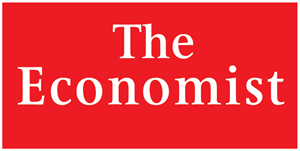Research study: Months after payments end, households earn more, own more, eat more & are happier
This was the first randomized control trial that GiveDirectly conducted and it studied some of the first transfers we delivered, with the aim of incorporating rigorous evidence into our operations and generate actionable evidence about cash transfers from the start. The study documented large, positive impacts of cash transfers of different magnitudes (~$300 and ~$1000) across a wide range of outcomes including owned assets, earnings, food security, psychological well-being, and domestic violence, an average of four months after transfers ended. It also examined a number of design questions such as how to size transfers and whether to give them to men or women, but the conclusions of these comparisons were not definitive given the scale of the study.
The study authors also conducted a second endline survey about 3 years after the program started. The results from this survey were less clear and some are still being debated by the academic community. As the authors note: “cash transfers result in sustained increases in assets. Long-term impacts on other dimensions, and potential spillover effects, remain to be substantiated by future work.”
Program design
First, eligible villages were randomly split into treatment and control groups. Participating households in the treatment villages were randomly split into a “treatment group” with 503 households to receive funds and a “spillover group” with 505 that would not. From there, a subgroup of 366 households received $300 per household, more than twice the average monthly spending in the area. After the program had begun, an additional 137 randomly selected recipients were informed that they would receive additional funds for a total of $1,000 per household. Except for the group that received large transfers, the program further subdivided the remaining recipients to receive the transfer either as a single large payment or as monthly transfer over nine months. Lastly, in about half of all treatment households, GiveDirectly provided the transfers to the female head of the household and to the male head in the other half.
The final survey for this study also included a “pure control group” of 432 households that did not receive transfers and were located in villages where no one else received transfers. Because these households were identified when the endline survey was conducted and not at the beginning of the program, the interpretation of spillover results is debatable. Additionally, no one in this study received transfers in the way that GiveDirectly structures them today, so we are cautious when drawing inferences.
The full design is shown in the table below:

Note: The entire village was not enrolled. Instead, participants were eligible if they lived in a house with a thatched roof (a targeting method GiveDirectly no longer employs).
Results
The results of an independent randomized evaluation nine months after the start of the program were peer-reviewed and published in a top academic journal. Therefore there is general agreement on how to interpret them. This part of the evaluation found positive effects on a range of outcomes, including:
- Improved economic outcomes: Recipients of every payment size and frequency were able to buy more stuff. There was a 23% ($36) increase in average consumption over a mean of $157; a 61% ($302) increase in the value of durable goods (assets) over a mean of $495; and a 33% ($16) increase in monthly earnings over a mean of $46.
- Improved nutrition: All recipients experienced less hunger. The study documents a ~10.3% increase in food security (or a 0.26 standard deviation increase on a food security index).
- Improved health and wellbeing: Each type of transfers made recipients 6.4% happier (a 0.16 standard deviation increase); 6.7% more satisfied with life (a 0.17 standard deviations increase); and 10.3% less stressed (a 0.26 standard deviation reduction). Additionally, households were also ~10.3% healthier (they saw a 0.26 standard deviations increase in a health index).
The study had less to say definitively about different transfer designs (size, frequency, and gender of head of household) as testing these involved making comparisons between relatively small subgroups. That said, it did find:
- No evidence of large differences in the effects of the cash transfers by gender except for psychological well-being and gender empowerment. Psychological well-being was 5.6% higher (0.14 standard deviation increase) and female empowerment was 6.7% higher (a 0.17 standard deviation increase) among households where the female head received the transfer.
- Food security is 10.3% (a 0.26 standard deviation) higher for those who received monthly transfers compared to those who received one-time transfers. On the other hand, the value of non-land goods (assets) was $92 higher for recipients of the one-time transfer compared to those who received monthly transfers.
- Recipients of the larger transfers reported a higher psychological well-being and scored higher on female empowerment. Notably, recipients of the larger transfer amount had $279 more in durable goods (assets) than those who received the lower amount. The effect of the larger transfer was twice as big as the effect of the smaller one.
We incorporated the results from this study into our operations in several ways.
- Given the absence of large differences by gender, we ask the household to choose one adult to be registered for the program rather than specifying that a male or female head must register.
- The differences between groups receiving monthly transfers and one-time transfers led us to conduct a subsequent study that asked recipients which structure they prefer (most recipients prefer 1-2 large payments).
- To avoid any potentially negative effects on eligible households who are not assigned to receive transfers, we moved away from conducting randomizations at the individual level within communities and instead prefer to randomize entire villages.
- Finally, the limitations of the study design around spillovers led us to conduct a larger study, which has now been published in a top peer-reviewed academic outlet.
There has been an active debate in the academic community about the interpretation of results from another survey 3 years after payments. Unlike the results 9 months after the program started, results from the three-year follow up have not yet been peer-reviewed. There seems to be agreement that people who received the transfers led to an increase in durable goods (assets) compared to the pure control group (the study estimates a 40% increase). For other outcomes, a range of possible interpretations is possible, including negative spillover effects on non-recipients to large and sustained positive effects consistent with the nine-month follow up.
For a more detailed discussion of the three-year results and how robust they are to different methodological choices, you can refer to posts by Berk Ozler at the World Bank, Justin Sandefur at the Center for Global Development, the response by the study’s authors, and GiveDirectly’s blog.
Press & blogs
Giving Cash Directly To The Poor Gets Thumbs Up From New Study — Forbes
The Price of Poverty — Foreign Affairs
Giving And Relieving: How GiveDirectly Cuts Out The Middleman — Fast Company
Giving poor people cash makes them happier — and their cashless neighbors miserable — Vox
Kenya’s basic income reduced rates of intimate partner violence — Fast Company


